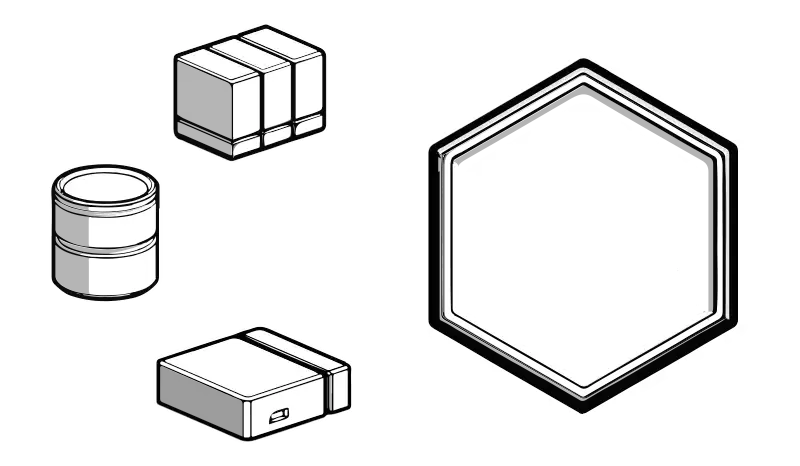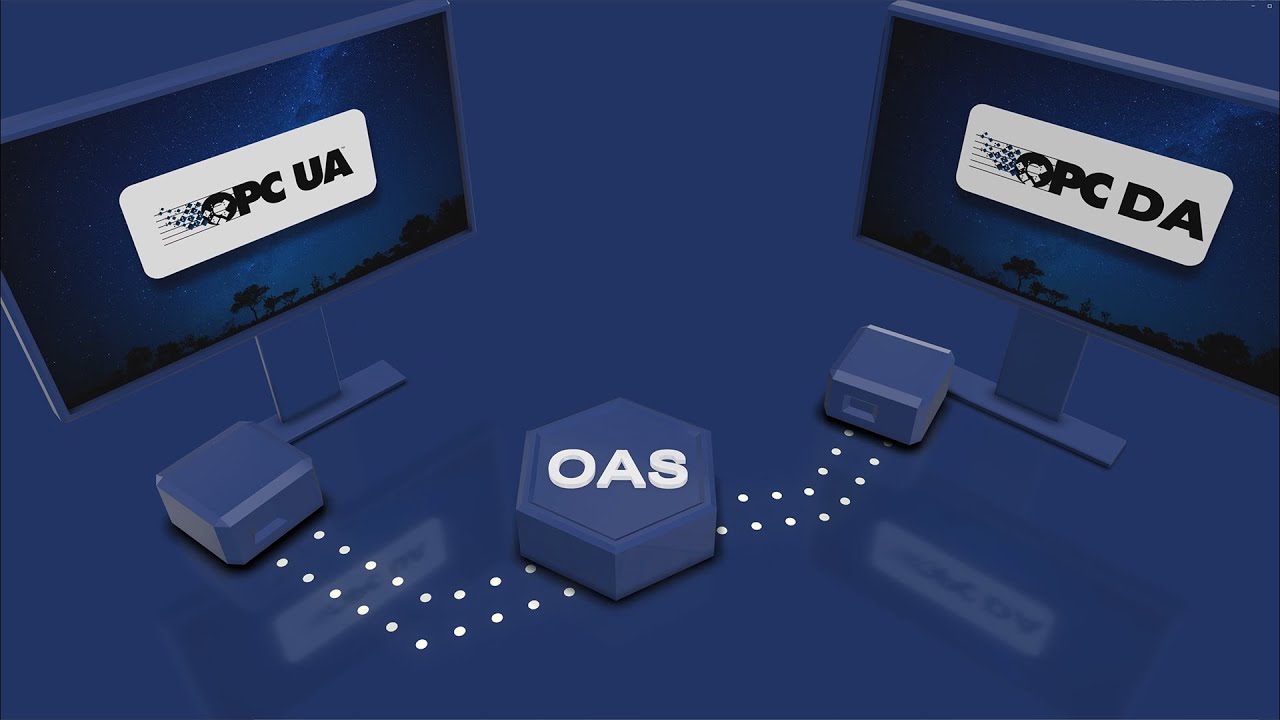Enable OPC Clients to Connect with OAS Data
The OPC Client Connector product authorizes unlimited local and remote OPC UA and OPC DA Clients for read and write access to OAS tag values.
Incorporate real-time data with PLCs, IoT cloud systems, .NET applications, and databases to enhance your connectivity within the OPC workspace. Allow your system's data to be shared with third-party OPC clients.
a server-based, highly-scalable, network platform that enables the transport and transformation of your data
Data HistorianAchieve fault-tolerant logging, zero data loss, and multi-destination storage with our high-performance Store and Forward technology.
Visualization ToolsBuild Visualizations, User Interfaces, and server configuration interfaces for .NET, web technologies, native iOS and Android mobile apps
Device & Data ConnectorsThe OAS Platform provides rapid communications and connectivity to a wide variety of PLCs, devices, and databases.
IoT ConnectorsConnect to cloud-base IoT gateways such as AWS, Azure IoT Hub, Azure Event Hubs, Kafka, and more.
Alarm Logging & NotificationCapture events on each data point, log to open formats for historical analysis and archiving, and trigger real time notifications
SDKs & APIsExplore a wide variety of Developer Tools and APIs to allow you to create applications and system integrations to execute in any environment.
Networking FeaturesOpen Automation Software implements edge computing with a Distributed Network Architecture.
Download a fully functional trial of Open Automation SoftwareKey Features & Benefits
Industry 4.0 Data Sources
Modbus, Allen Bradley PLCs, Siemens S7 Controllers, OPC UA, OPC DA, MQTT, Sparkplug B, MTConnect, AWS IoT Core, Kafka, .NET, REST Clients, Databases
Unified Namespace
Merge different data sources into a single, comprehensive data model. Node IDs and OPC items adhere to the same tag naming convention that you define.
OPC UA Connectivity
Connect your OPC UA clients directly to the OAS Engine's built-in OPC UA server. Direct access to every tag's 700+ variables with no additional setup required.
OPC DA Connectivity
Allow classic OPC Data Access 2.x or 3.0 OPC Clients to connect to OAS through the OPCSystems.NET Server. This setup can act as either an OPC UA to DA converter or abd OPC DA to UA gateway.
Remote Networking
OAS features built-in networking syntax for direct access or proxy routing, enabling connectivity over LAN, WAN, VPN, or the Internet. This eliminates the need for DCOM when utilizing classic OPC DA connections, while enhancing performance for both OPC UA and OPC DA.
Data Protection
Utilize OAS security authentication to allow connectivity with user credentials and certificates with OPC UA. Security definitions permit access for browsing, reading, or writing values per site, group, tag, and variable.
Consolidate Connections
Establish a single connection to each data source, such as OPC servers, to share with multiple OPC clients. This approach enhances data throughput and lessens the communication load on each data provider, especially when using OAS as an OPC DA to UA converter.
Common Use Cases
OPC Server for Industry 4.0 Data
All OAS tag values allow read and write operations with various data types, including Modbus applications, Allen Bradley PLCs, Siemens S7 controllers, OPC UA servers, OPC DA servers, MQTT, Sparkplug B, AWS IoT Core, and Kafka.
OPC Server for Databases
Configure tags with a data source from databases to enable access to SQL Server, Oracle, MySQL, PostgreSQL, and SQLite. This allows for bi-directional access for OPC clients when the Database Connector and Data Historian products are activated.
Compute Values
Build custom equations with tag values using the calculation engine. Great for logic processing before pushing data through an OPC DA to OPC UA gateway or converter.
OPC Tunnel
Install OAS as close as possible to each OPC server to facilitate efficient routing of data. Utilize the OAS Distributed Network Architecture to enhance data flow and resolve network routing issues.
One Way Data
Use communication diodes to create unidirectional gateways. This keeps your secure networks safe while allowing outside OPC clients to access necessary data.
Learn how thousands of customers are using the OAS Product Platform around the globe to achieve truly open industrial automation
24/7/365
Support
Technical support available by phone, chat, and email
30+ Years
Experience
Product efficacy, market testing, and reliability
Used in 10K+
Data Servers
OAS is used in thousands of businesses worldwide
OAS Platform Features
Cross-Platform Support
The OAS Platform supports multiple operating systems and deployment options including Windows, Linux, Docker Containers, and can even run on low footprint devices such as a Raspberry PI 4.
Networking
OAS is an edge solution that offers flexible networking options for standalone installations, multi-tenant data aggregation, and even secure unidirectional data transport.
Programmatic Setup
Utilize our .NET SDK or REST API for flexible and automated setup, ensuring full integration with your asset management software. You can also import and export CSV files, which helps you work with Excel and third-party applications.
Calculations, Time On, Counts, and Totals
Perform real-time calculations, track durations, log counts, and total values without writing code. These features are useful when bridging data between OPC DA and OPC UA.
See How We Compare
The initial cost of OAS is far less than our competitors – but the savings don’t stop there. We work with OEMS and System Integrators to provide perpetual licenses with quantity discounts with flexible tag pricing and unlimited client connections.
No Question Left Unanswered
We make getting started with OAS easy - Browse our extensive Knowledge Base of articles on Getting Started as well as How To content that takes you step-by-step through building a solution, and finally learn more about specific features and configurations.
Getting Started - Download, Setup & Support
Step-by-step introduction to using the Open Automation Software platform
How to manually add and define Tags using the Configure OAS application.
Getting Started - OPC UA Client
Connect to the OAS OPC UA server.
Getting Started - OPC DA Client
Connect to OAS Tags through the OPCSystems.NET OPC server.




